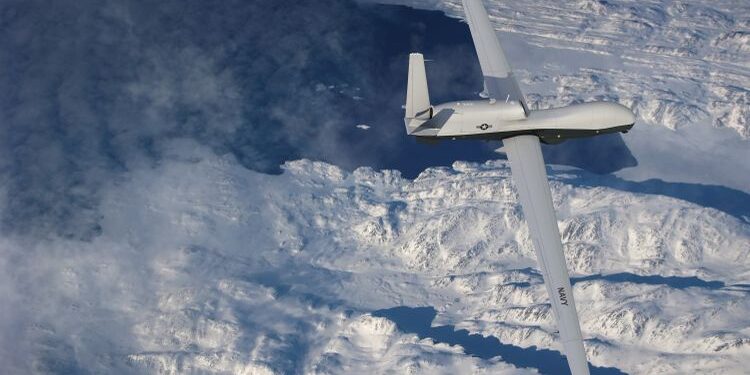Northrop Grumman Corporation fulfilled its promise to supply vital information, surveillance, reconnaissance, and targeting capabilities in the High North by successfully demonstrating the MQ-4C Triton navigation system’s capacity to function at high latitudes far inside the Arctic Circle. The system’s ability to function in the severe, hostile environment over the Arctic Ocean was demonstrated during the test flight. Triton is the only autonomous long-endurance, high-altitude aircraft that can stay up beyond 50,000 feet for longer than a day because to its cutting-edge technological design.
In a recent test flight, Northrop Grumman’s unmanned Triton aircraft departed from Deadhorse, Alaska, and travelled within 100 miles of the North Pole. The flight successfully demonstrated Triton’s capacity to travel in the Arctic by making use of Northrop Grumman’s exclusive navigation systems, mission management computer, and enhanced operational flight programs. While staying inside U.S. and Canadian airspace, the aircraft collected navigation data over the course of its five-hour journey. Additionally, the test verified initialization and alignment protocols for ground-based GPS, allowing for operations from runways north of 70 degrees latitude. Because Triton is a high-altitude, long-endurance platform, it can operate above Arctic winds and circumvents the speed and range constraints that arise at middle altitudes, making it an excellent choice for missions in the High North.
The multi-intelligence MQ-4C Triton was developed for the Royal Australian Air Force and the United States Navy. It is capable of performing a variety of duties, such as maritime patrol, signals intelligence, and search and rescue. Compared to medium-altitude systems, these aircraft can operate at a greater altitude and have a longer endurance. In order to provide an exponential increase in mission information, they also integrate simultaneous multi-intelligence sensor operations.















